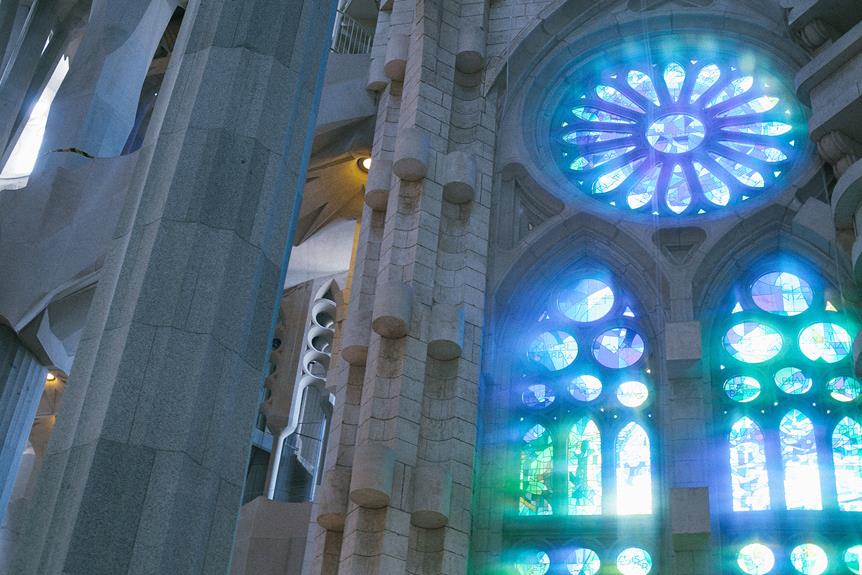
I've always been fascinated by history and the rich cultural heritage of different countries. When I think of Spain, the first historical site that comes to mind is the Alhambra Palace in Granada. Its stunning architecture and intricate details transport you back in time to the era of Moorish rule. But Spain has so much more to offer, from the Sagrada Familia in Barcelona to the Roman Aqueduct in Segovia. Join me as we explore the 6 best historical sites in Spain.
Key Takeaways
Table of Contents
- Alhambra Palace in Granada is a historical site with a rich cultural heritage, known for its exquisite craftsmanship and intricate Islamic architecture.
- Sagrada Familia in Barcelona is a must-visit landmark that showcases the unique blend of Gothic and Art Nouveau styles, with its towering spires, vibrant mosaic tiles, and stained glass windows.
- Alcazar of Seville is a stunning architectural marvel that combines Moorish and Renaissance styles, featuring intricate details of arches, domes, and courtyards. It has served as a royal residence, fortress, and even a setting for movies and TV shows.
- Toledo Cathedral is a fusion of various architectural styles and has witnessed centuries of religious ceremonies. It holds significant cultural importance and is considered an enduring heritage of Spain.
Alhambra Palace, Granada
One of the most captivating historical sites in Spain is the Alhambra Palace in Granada. Its historical significance and stunning Islamic architecture make it a must-visit destination for history enthusiasts and architecture lovers alike. The Alhambra Palace served as a fortress, a royal residence, and a symbol of power during the Islamic rule in Spain. Its construction began in the 9th century, and it underwent several expansions and renovations over the centuries. The palace showcases the exquisite craftsmanship of Islamic architects, with intricate geometric patterns, elaborate tilework, and meticulously carved stucco decorations. Walking through its halls and courtyards, one can't help but be in awe of the grandeur and beauty that the Alhambra Palace exudes. It is truly a testament to the rich cultural heritage of Spain.
Sagrada Familia, Barcelona
When it comes to iconic landmarks in Barcelona, the Sagrada Familia is a must-see. Designed by the renowned architect Antoni Gaudi, this architectural masterpiece stands as a testament to his unique vision and creativity. The Sagrada Familia is not only a symbol of Barcelona but also a symbol of Gaudi's genius, making it a truly remarkable site with rich cultural heritage.
Architectural Masterpiece: Sagrada Familia
I am fascinated by the architectural masterpiece of Sagrada Familia located in Barcelona, Spain. The construction progress of this iconic basilica is a testament to human determination and patience. Despite its ongoing construction for over a century, the Sagrada Familia continues to awe visitors with its intricate details and unique design. Antoni Gaudi's vision and interpretation of Gothic and Art Nouveau styles are evident in every corner of the building. The towering spires, adorned with vibrant mosaic tiles, reach towards the sky, creating a surreal and ethereal atmosphere. Inside, the light filters through stained glass windows, casting a kaleidoscope of colors on the mesmerizing interior. The Sagrada Familia is a true architectural marvel that captivates the hearts and minds of all who visit.
Gaudi's Iconic Creation
Regularly, I visit the awe-inspiring Sagrada Familia in Barcelona, a creation by Gaudi that leaves me in utter amazement. Gaudi's influence on modernist architecture is undeniable, and the Sagrada Familia stands as a testament to his genius. The combination of intricate details, organic forms, and innovative structural techniques makes this iconic masterpiece a true marvel. Gaudi's vision for the Sagrada Familia goes beyond conventional architectural norms, pushing the boundaries of design and engineering. The soaring spires, stained glass windows, and intricate facades tell stories of faith, nature, and human history. Every time I step inside, I am overwhelmed by the sheer beauty and grandeur of Gaudi's creation. It is a living testament to his lasting impact on the world of architecture and a must-visit for anyone seeking to appreciate the wonders of modernist design.
Barcelona's Iconic Landmark
Visiting Barcelona's iconic landmark, the Sagrada Familia, never fails to leave me in awe of Gaudi's visionary genius. This magnificent basilica stands as a testament to Barcelona's historical significance and is one of the most famous landmarks in the city. Construction of the Sagrada Familia began in 1882 and is still ongoing today, making it a symbol of Barcelona's rich cultural heritage and architectural prowess. Gaudi's unique blend of Gothic and Art Nouveau elements, along with his intricate attention to detail, is evident in every aspect of the Sagrada Familia. From the towering spires to the ornate facades, the beauty of this masterpiece is truly unparalleled. Stepping inside the basilica, the play of light and color through the stained glass windows creates a mesmerizing atmosphere, further highlighting Gaudi's brilliance. Barcelona's Sagrada Familia is a must-visit for anyone seeking to immerse themselves in the city's history and marvel at its iconic landmarks.
Alcazar of Seville
One can truly appreciate the architectural beauty and historical significance of the Alcazar of Seville. The Alcazar's architectural design is a stunning blend of Moorish and Renaissance styles, making it a masterpiece of Spanish architecture. The intricate details of the arches, domes, and courtyards showcase the craftsmanship of the artisans who built it. As one explores the palace, it is evident that each room tells a story of the past, with its ornate decorations and exquisite furnishings. The historical significance of the Alcazar cannot be understated. It has served as a royal residence, a fortress, and even a setting for movies and TV shows. Walking through its halls, one can't help but feel a sense of awe and admiration for the rich history that the Alcazar has witnessed.
Toledo Cathedral
Toledo Cathedral is an architectural marvel that holds a significant place in history. Its grandeur and intricate design showcase the rich cultural heritage of Spain. Not only is it a religious site, but it also houses remarkable artworks that are a testament to the artistic prowess of the era. It is a must-visit landmark that offers a glimpse into Spain's past and its enduring traditions.
Architectural Marvel and History
As an architecture enthusiast, I am in awe of the rich history and grandeur that is encapsulated within the magnificent Toledo Cathedral. This architectural marvel stands as a testament to the skill and craftsmanship of its builders, and its architectural preservation is a testament to the cultural significance it holds for the people of Spain. The cathedral, with its stunning Gothic design and intricate details, is not only a place of worship but also a symbol of the city's rich history. It has witnessed centuries of religious ceremonies and has been a witness to the ebb and flow of time. The cultural significance of the Toledo Cathedral cannot be overstated, as it represents the fusion of various architectural styles and serves as a living testament to the enduring heritage of Spain.
Religious Significance and Art
The religious significance and art found within the Toledo Cathedral are awe-inspiring, showcasing centuries of devotion and creativity. As I entered the Cathedral, I was immediately struck by the religious symbolism that permeated every corner of the space. The intricate carvings, vibrant stained glass windows, and ornate altarpieces all conveyed profound religious messages. The artists who crafted these masterpieces were not only skilled in their artistic techniques but also deeply spiritual, using their talents to honor and glorify their faith. The attention to detail in the sculptures and paintings was extraordinary, with each brushstroke or chisel mark serving a purpose. It was evident that these works of art were created with love and devotion, making the Toledo Cathedral a testament to the enduring power of religious expression through artistic means.
Must-Visit Landmark in Spain
One landmark that should not be missed when visiting Spain is the majestic cathedral in Toledo. As I stood in front of this magnificent structure, I couldn't help but be in awe of its grandeur and historical significance. The cathedral, built in the Gothic style, is not just a religious site but also a symbol of Spain's rich cultural heritage. Inside, visitors can admire the stunning artwork and intricate details that adorn the walls and ceilings. After exploring the cathedral, be sure to indulge in some traditional Spanish cuisine. The city of Toledo is known for its delicious dishes, such as paella and tapas, which are a true delight for food lovers. And if you're looking to experience the vibrant culture of Spain, don't miss out on the flamenco dance and music performances that can be found in various venues throughout Toledo.
Prado Museum, Madrid
I've found an incredible historical site in Spain – the Prado Museum in Madrid. Located in the heart of the city, this museum is a treasure trove of art and culture. With its vast collection of over 20,000 works, the Prado Museum is a must-visit for art enthusiasts. As I walked through its halls, I was in awe of the masterpieces by renowned artists such as Velázquez, Goya, and El Greco. The museum's collection spans various periods, showcasing the evolution of Spanish art. While the Alhambra Palace in Granada may steal the spotlight, the Prado Museum holds its own as a cultural gem. Its impressive collection and stunning architecture make it a true marvel in the heart of Madrid.
Roman Aqueduct, Segovia
As I explored further into Spain's rich cultural heritage, I discovered the awe-inspiring Roman Aqueduct in Segovia. This magnificent structure has stood the test of time and is a testament to the incredible engineering skills of the ancient Romans. Here are some fascinating facts about the Roman Aqueduct in Segovia:
- Segovia's UNESCO World Heritage status: The aqueduct is a significant part of Segovia's UNESCO World Heritage designation, highlighting its cultural and historical importance.
- Impressive engineering: Built in the 1st century AD, the aqueduct showcases the ingenuity and precision of Roman engineering, as it spans over 800 meters and reaches a height of 28 meters.
- Impeccable preservation: Despite its age, the aqueduct remains remarkably intact, with most of its original arches still standing strong.
- Iconic symbol: The aqueduct has become an iconic symbol of Segovia, attracting visitors from around the world who marvel at its grandeur and marvel at the remarkable achievements of the ancient Romans.
Visiting the Roman Aqueduct in Segovia is truly a journey back in time and a testament to the brilliance of Roman engineering.
Frequently Asked Questions
How Long Does It Take to Visit the Alhambra Palace in Granada?
It takes about 3-4 hours to visit the Alhambra Palace in Granada. The best time to visit is in the morning to avoid crowds and fully appreciate the beauty and history.
Are There Any Restrictions on Photography Inside the Sagrada Familia in Barcelona?
There are strict photography restrictions inside the Sagrada Familia in Barcelona due to security measures. Cameras and tripods are not allowed inside, but you can capture the beauty with your eyes.
Can Visitors Explore the Gardens of the Alcazar of Seville?
Yes, visitors can explore the gardens of the Alcazar of Seville. It is a hidden paradise, filled with enchanting beauty. As a photographer, it would be a delight to capture its splendor.
Is There an Entrance Fee to Visit the Toledo Cathedral?
There's a fee to enter Toledo Cathedral, but it's worth every penny. The visitor experience is incredible, with stunning architecture and a rich cultural history. Check online for ticket prices before you go.
Are There Audio Guides Available at the Prado Museum in Madrid?
Yes, there are audio guides available at the Prado Museum in Madrid. They provide a convenient and informative way to explore the museum's extensive collection, enhancing the overall visitor experience.




Leave a Reply
You must be logged in to post a comment.